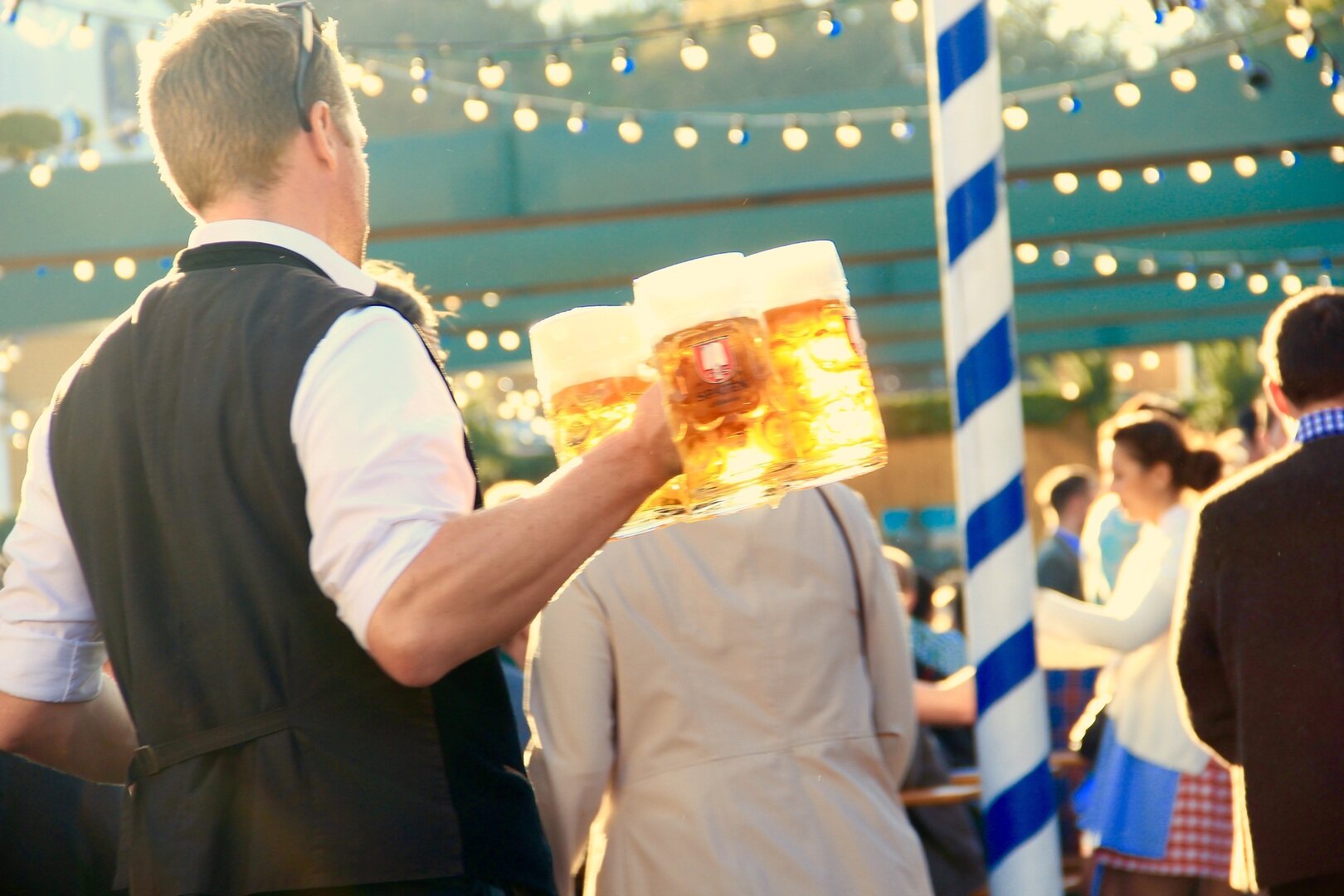Oktoberfest: What you need to know
We've all heard of Oktoberfest, the epic beer drinking party in Germany. Images of huge beer steins, men and women dressed in lederhosen and dirndl, and sausages the size of baseball bats come to mind. but what about the beer? We're here to give you a little history on Oktoberfest, the beers, and what to eat when you drink it.
Oktoberfest, as an event, comes from a wedding celebration of German Crown Prince Ludwig. Instead of having a boring feast in the castle, this popular prince decided to hold a huge party in the fields outside the Munich city gates, and in turn, it became a huge public festival every year. Today, the festival still begins with the mayor of Munich tapping the first keg at noon on the first day of the celebration.
Did you know Oktoberfest actually happens in September? It's a 16 day event, ending on the first Sunday in October, so the start date is different every year. October 3rd is German Reunification Day, so if the first Sunday in October falls on the 1st or 2nd, they extend the festival to include that national holiday, so the festival could be as long as 18 days in some years!
As with all things related to German beer there are rules. The style of beer is actually called Marzen, which is German for "March". In the days before refrigeration, beer couldn't be brewed in the summer for fear of bacterial infection and beer spoilage, so Marzen was the last beer brewed until the heat broke and brewing could resume in the fall. The abv was raised to 6% and the beer was stored in caves to keep cool during the warm months, and meant to be consumed all summer. This German-style amber lager has a malt-forward profile that showcases the toasty, caramel-like flavors of melanoidin, an aromatic compound resulting from the Maillard reaction, a chemical reaction between sugar, amino acids, and heat that occurs when malt is kilned.
In Germany, only the six breweries that are located within the Munich city limts can use the term "Oktoberfestbier" on their labels and ship beer to the tents: Augustiner, Hacker-Pschorr, Hofbrauhaus, Lowenbrau, Paulaner, and Spaten. This is done because of Munich tradtion and to keep outside sponsor infringement and unofficial fests from trying to cash in. Other German breweries are allowed to call their Marzen "festbier", but none are served at the festival. Only the six Munich breweries are the official Oktoberfest beers. (These beers are all available in the US, but often can be hard to source. We carry Spaten.)
That's not to say there aren't amazing German Marzen-style lagers coming from Germany and beyond. In fact, many gold-medal winner Marzen beers have come from the US.
Of course, when pairing food with Marzen beer, you're going to think of all the traditional German foods, like schnitzel, big pretzels with mustard, and, of course, the myriad of sausage options. But it can be hard to find and source traditional German food in the States. Remember above, when we mentioned melanoidin? The Malliard reaction happens with grilled meat as well, and any grilled, roasted, dry-rubbed, or baked piece of meat, especially pork, that has this will pair well with Marzen beers.
One pairing that comes out of left field is tomato-based dishes. Sauce forward pizza, pasta bolognese, the acid in these tomato sauce based dishes is a great counter to Marzen's malty sweetness.
Another odd pairing is Mexican food, particularly tacos and tostadas. For a brief time in the 1800s, Mexico was part of the Austro-Hungarian Empire. Many Germans and Austrians lived there, and they brought their beers with them. In fact, another Munich beer style, the Dunkel, has long lived on in Mexico as Negra Modelo. As for pairing with Marzen, since pork is its natural pairing, try carnitas. The pork and malt go well together, the cilantro plays along with the hops, and if you add some pico de gallo, you'll get some acidic zing from the tomatoes.
Overall, even though Marzen is generally considered a fall seasonal style in the US, it is versatile and can be enjoyed with a number of foods and any time throughout the year.

